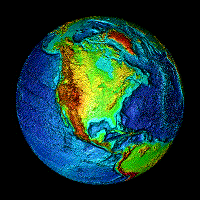Posted by PuertoMadero in asides, Blog, Featured Articles | 0 Comentarios
“Inusual este ciclón en Yemen”
Oct-30 13:08 hrs
.
.
Bautizan como ‘Chapala’ a inusual ciclón en oriente próximo
Yemen podría sufrir graves afectaciones por estar en una región seca; en dos días lloverá lo de todo un año
 El ciclón generará vientos de hasta 230 kilómetros por hora en la región.
El ciclón generará vientos de hasta 230 kilómetros por hora en la región.
GINEBRA, SUIZA (30/OCT/2015).- La Organización Meteorológica Mundial (OMM) bautizó con el nombre de “Chapala” al ciclón potencialmente devastador que en las próximas horas se podría convertir en una “súper tormenta ciclónica”, con vientos de hasta 220 o 230 km/h, lo equivalente a un huracán de categoría 4.
El ciclón “Chapala” se formó en el mar de Omán, país localizado al suroeste de Asia, en la costa sureste de la península arábiga, y si sigue su trayectoria podría pegar el lunes en Yemen, un territorio que está sumido en un conflicto armado.
Los ciclones tropicales son extremadamente inusuales en la península arábiga.
“Estamos muy preocupados, lo estamos vigilando y esperamos que el impacto en el Yemen sea limitado”, dijo en Ginebra la portavoz de la OMM, Clare Nullis.
El ciclón grave más reciente impactó en Omán en 2007, causando 50 muertos y pérdidas millonarias.
¿Por qué es tan inusual este ciclón “Chapala”?
Además del nombre que a los mexicanos nos resulta familiar por asociarlo con el lago ubicado entre Jalisco y Michoacán, el ciclón podría afectar una región de clima seco.
Yemen no se encuentra preparado para las lluvias que podrían ocurrir en los próximos días, lo que hace temer que las infraestructuras queden gravemente dañadas y que se produzcan deslizamientos de tierra.
Es inédito además porque la portavoz de la OMM, Clare Nullis, dijo que no existen registros de que en el pasado un ciclón haya pasado por Yemen.
“Los impactos más graves los traerán las abundantes lluvias, ya que el área recibirá el equivalente a las precipitaciones de un año en tan sólo un par de días”, afirmó Nullis.
En Omán se pronostica un impacto severo en Salalah, una pequeña población costera del sur, con alrededor de 200 mil habitantes.
Con información de AFP y EFE
=============
Cyclone Chapala Remains a Powerful Storm in the Arabian Sea; Rare Destructive Landfall Threat to Yemen, Oman
Cyclone Chapala could bring high winds and heavy rain to parts of the deserts in the Mideast.
Cyclone Chapala became the strongest tropical system so far south in the Arabian Sea on record and may make an unprecedented landfall at hurricane strength along the coast of Yemen or southwest Oman in the days ahead.
Chapala rapidly intensified and had estimated winds as strong as a high-end Category 4 early Friday. Some further decrease in intensity are expected over the next day or so as the system gradually weakens.

Cyclone Chapala: Current Status
The latest location, estimated wind speed, and infrared satellite image of Cyclone Chapala, according to the U.S. Joint Typhoon Warning Center.
While direct measurements from reconnaissance aircraft are not available over the Arabian Sea, Chapala’s rate of intensification from a high-end tropical storm to a high-end Category 4 storm in 24 hours ending 2 a.m. EDT Friday morning was quite impressive for this part of the world.
Tropical cyclones in the Indian Ocean basin, which includes the Arabian Sea, are simply known in English as “cyclones” or “cyclonic storms” regardless of strength. There are no special terms such as “hurricane” or “typhoon” applied based on reaching a certain intensity, but the India Meteorological Department does apply various adjectives such as “severe” or “very severe” to describe different intensity levels.
(MORE: Why Tropical Cyclones Are Named)
Warmer-than-average Arabian Sea water along its path had, in part, allowed for Chapala is intensify so rapidly.
Steered by subtropical high pressure, Chapala is expected to track west or west-northwest through the weekend, making landfall along the coast of eastern Yemen or southwest Oman Monday.

Cyclone Chapala’s Forecast Path
The latest potential forecast track of the center of Cyclone Chapala, from the U.S. Joint Typhoon Warning Center. Remember, impacts (rain, waves, wind, coastal flooding) can occur outside the cone.
Tropical cyclones that do near the Arabian Peninsula often ingest dry, desert air and weaken before making landfall, if they do at all.
In this case, we expect Chapala to make landfall as a weaker, possibly much weaker cyclone than its potential maximum intensity over the Arabian Sea. Small tropical cyclones can both intensify rapidly and weaken rapidly.
However, Chapala may still be a formidable cyclone of at least Category 1 intensity at landfall, a very unusual, if not unprecedented occurrence for Yemen or southwest Oman. (More on that below.)
The threat of heavy rainfall should be in play regardless of the intensity.
Chapala has the potential to dump 3-4 times or more the average yearly rain in just a day or two over parts of eastern Yemen and southwest Oman. According to worldclimate.com, the average annual rainfall in Salalah, Oman(estimated population 197,000 as of 2009), is only around 4 inches.

Model Rainfall Forecast: Cyclone Chapala
Total rainfall from Cyclone Chapala, as predicted by the European (ECMWF) forecast model through Wednesday. This forecast is subject to change based on changes in the forecast track, which remain uncertain at this time.
Mountains surround the coastal city of Salalah, Oman, and also are situated to the north of several eastern Yemeni coastal cities.
(INTERACTIVE: Oman/Yemen Coast in the Path of Chapala)
Rivers running from these mountains that are normally dry or feature very low flow would see rapid rises with rainfall of this magnitude, which could be destructive or deadly.
Unprecedented Landfall?
You may wonder how often “tropical cyclone” and the “Arabian Peninsula” appear in the same sentence. How unusual could Chapala be?
First, according to hurricane specialist Michael Lowry and the NOAA best track database, there is no record of a hurricane-strength cyclone landfall in Yemen dating to 1945.
Weather Underground’s Dr. Jeff Masters says Tropical Depression Three in 2008 claimed 90 lives and was responsible for $400 million in damage.
(WUNDERBLOG: Cyclone Chapala’s Yemen Threat)
Secondly, there has been only one Category 5 equivalent Arabian Sea cyclone of record, Gonu in 2007, which weakened before making landfall in northern Oman near the capital, Muscat. Weather Underground’s Dr. Jeff Masters notes, however, that reliable satellite estimates in the Arabian Sea date only to 1990.
There is no record of a cyclone of Category 4 strength or stronger tracking as far south as Chapala in the Arabian Sea.
(MORE: Hurricanes in Strange Places)
Despite all this, Arabian Sea tropical cyclones are not as unusual as they sound.
Each year, an average of one to two tropical cyclones form in the Arabian Sea, according to a 2011 climatology study by Amato Evan and Suzana Camargo.

Tracks of all recorded global tropical cyclones from 1851-2008. Tracks in the Arabian Sea are highlighted by the yellow box. (NOAA/NCDC)
These cyclones are most likely to form in two periods: from May through June and October through November. The mid-late summer period is typically not favorable, thanks to increased wind shear from the wet phase of the Asian monsoon.
(MORE: Where the Season Peaks Twice)
In June 2007, Cyclone Gonu was the most intense Arabian Sea storm on record, making landfall in Oman, then in southern Iran.
Gonu claimed 100 lives in Oman, Iran and the United Arab Emirates and was responsible for $4 billion in damage, according to the Evan and Camargo study.
Almost exactly three years later, Cyclone Phet alarmingly intensified to a Category 4 equivalent cyclone, before weakening to a Category 1 storm upon making landfall on the eastern tip of Oman, east of the capital city of Muscat.
In May 1999, Cyclone ARB 01 slammed into Pakistan near Karachi as a strong Category 3 equivalent storm, killing at least 700 in Pakistan. This was the strongest tropical cyclone on record to hit Pakistan.
(MORE: Deadliest Tropical Cyclones in World History)
In the limited historical record, however, strong cyclones in the Arabian Sea are more rare than other basins, due to the proximity of dry air from the Arabian Desert, the aforementioned increased wind shear during the wet phase of the Asian monsoon, and the basin’s overall small size.




































